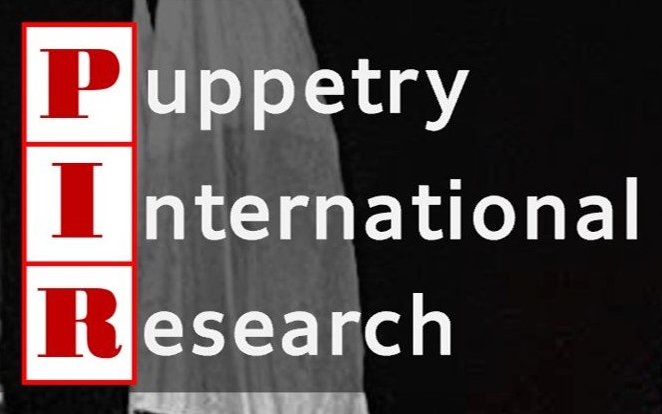This award is named in honor of Nancy Lohman Staub, an original member of UNIMA-USA and Special Citation winner, who has contributed to the understanding of the world puppetry through fostering the museum collection at the Center for Puppetry Arts Museum in Atlanta, Georgia, leadership in UNIMA-International, and her extensive writing on puppetry.
2025 Nancy Staub Publications Awards
ARTICLES
Felice Amato (2022)
"Hand in Glove: Understanding the Hand Puppet’s Life and Liveness as a Precursor to Its Application in Education and Therapy."
Felice Amato
—Reinforces how use of this kind of puppet in applied situations has the promise of being especially helpful for people in expressing inner emotions as well as those who have been evaluated as having Autism Spectrum Disorder (ASD).
—I found Amato’s approach to the subject to be very exciting and have no doubt it will be useful to both puppeteers and those engaged in special education.
John Bell (2023)
Something Beautiful and Powerful: Politics, Art, and Bread and Puppet Theater
PAJ: A Journal of Performance and Art 2023, 45 (1 (133)): 34–47.
—Clear prose and concrete language paints a vivid picture of Bread And Puppet Theater.
—An excellent comprehensive documentation and of B&P's legacy, the huge number of significant artists who have worked with Peter Schumann and gone on to do their own work.
Jyana S. Browne (2023)
Realisms in Japan’s Eighteenth-Century Puppet Theater [Chapter 9] pp. 175-192 in Saltzman-Li, Katherine, and Jessica Nakamura.
Realisms in East Asian Performance. Ann Arbor: University of Michigan Press.
—Comprehensive historical overview of 18th century joruri and how puppetry came to take focus away from the tayu [narrator].
— I … very much appreciate the premise, well supported, of a move from emotional "realism" via the chanter/playwright, to a more physical "realism" via the 3-person puppet and increasing daily life movements.
Gray F. Kidd (2023)
“Living Legacies of Slavery: Racism and Racial Acrobatics in North-East Brazilian Puppet Play, 1940–80.” Journal of Latin American Studies. 2023. 55(3):403-427.
—A timely intervention in the field of mamulengo, showing how this popular [Brazilian] puppetry tradition is imbricated in racial dialogue.
—Addresses the complex issues of how the protagonists are represented both as oppressed transgressive heroes.
Dassia Posner (2022)
”Extraordinary Bodies in Ordinary Spaces: Royal de Luxe in Montreal”
Puppetry International 51 Spring/Summer
Dassia Posner
—An in-depth and hands-on analysis of the first performance of Royal de Luxe's amazing outdoor immersive spectacle puppetry in North America.
—Captures the profoundly moving experience of the transforming power of the mega-puppet.
DISSERTATIONS
Rachel Herschman (2018)
Kasper’s Theater: Avant-Garde and Propaganda Puppetry in Early Twentieth-Century Germany.
Ph. D, University of Washington Herschman_washington_0250E_19423.pdf(89.34 MB)
Paul Klee, Untitled, (Self Portrait),1922, Zentrum Paul Klee, Bern
—Thoroughly examines how puppetry served as both an avant-garde artistic tool and a mechanism of propaganda in early 20th-century Germany.
—A game changing work that provides an entirely new understanding of the continuities between the popular fairground puppetry tradition of German and the avant-garde.
Wu Chee Hann (2022)
Puppetry: A Performative Reenactment of Taiwan
UC Irvine. ProQuest ID: Wu_uci_0030D_17916. Merritt ID: ark:/13030/m5p62z57.
Performance with Taiwan Puppet Troupe in 2018.
Venue: Segerstrom Center for the Arts’ Julianne and George Argyros Plaza in Costa Mesa, California. Photo by Spencer Grant.
Wu Chee Hann
—Scholastically sound and superbly written. Weaving Taiwanese history and sociopolitical development to puppetry.
—Very wide-ranging, well-researched discussion of . . . contemporary puppet practice in Taiwan [and] . . . the promotion of traditional budaixi glove-puppetry as a national symbol.
BOOKS / JOURNAL ISSUES
Jo Ann Cavallo, ed. (2023)
World Epics and Puppet Theater (AOQU 4.2)
Palermo: Edizioni Museo Pasqualino, 2024.
—A vital contribution to puppetry scholarship.
—It is clear that many of the theaters and traditions covered here are not only examined in new ways, but that the traditional theaters in question are not static “museum pieces,” but are actively evolving to respond to, or even counteract changes in circumstances.
Claudia Orenstein and Tim Cusack, eds. (2024 and 2025)
Puppet and Spirit: Ritual, Religion, and Performing Objects, vol. I and II. N.Y. Routledge.
Claudia Orenstein
Tim Cusack
—The editors made great choices to document the role spirituality has played in puppetry traditions around the world.
— A major contribution to puppet studies - both continuing earlier discourses on puppets and spirituality . . . and opening new ground.
—Offers an intriguing overview of puppetry's ritual origins, religious contexts, and spiritual dimensions and expands discourses on what puppetry is, and even more so, what puppetry does.
Sumarsam (2024)
The In-Between in Javanese Performing Arts: History and Myth, Interculturalism and Interreligiosity
Middletown: Wesleyan Univ. Press
Sumarsam
“This book is my lifelong journey to master complicated, profound and changing art/ritual/entertainment through understanding its multiple variations from court village entertainment-cum-ritual to palace esthetic/proof of cultural competency, from coastal mercantile entrepots to central Javanese wet rice terraces, from colonial plantation and textile factory culture to contemporary industrial estates and creative economy efforts. I view these complexities as running parallel to my own experiences in between the dialectical encounters that have shaped my pursuit of the performing arts.” - Sumarsam
Reviewers Comments:
—Combines deep historical research with a practitioner's knowledge.
—Extraordinarily dense archival study that illuminates how wayang (primarily through Javanese shadow puppetry, as well as the wider world of gamelan) has been interpreted in different times and by different audiences.
—Thoughtfully written from his (uncomfortable) position as an insider (Javanese) while deftly joining global discourses of theory and history about wayang and Indonesia. . . . His work is both conceptually rich and accessible to read.


























